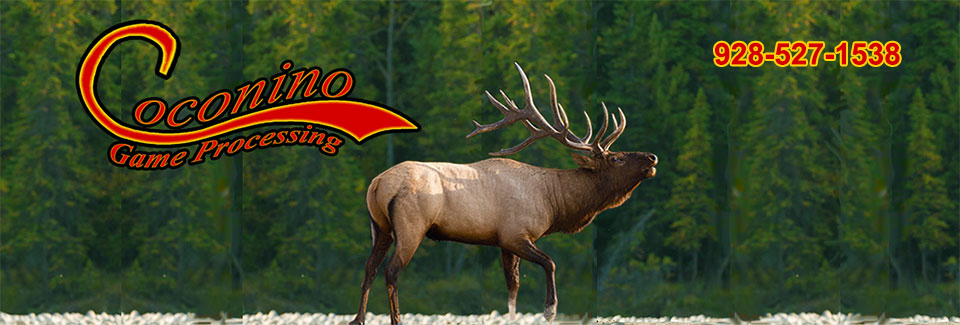|
To eviscerate the animal, begin by rolling the carcass
over on its back with the rump lower than the shoulders and spread the
hind legs. Begin between the legs by cutting down through the legs
muscles to the skin over the pelvic bone. Turn the knife over and
cut through the skin over the abdomen by using two fingers from the other
hand to hold the viscera (intestines and stomach) away from the tip of the
knife.
Cut up through the breastbone and up the neck as far as
possible. If the head is to be mounted, stop the cut between the
legs at the base of the brisket. It is easier, especially on larger
animals to cut on either side of the breastbone or brisket (through the
joints) rather than up the middle.
Sever the windpipe and esophagus as close to the head as
possible. Tie a string tightly around the esophagus to keep contents
from contaminating the meat. Cut around the anus and tie it with a
string for the same reason. Next, cut the diaphragm muscle that
separates the heart-lung compartment from the main digestive tract away
from the ribs.
This is a good time to remove the heart and liver.
They are excellent eating and should be kept in a clear plastic bag to
keep them clean. Keep cooled.
Lay the animal on its side. The contents should either fall out or
pull away.
Hang the animal in the shade to drain the blood from the body cavity and
to circulate air around the body to cool it. Hang with head or hind
legs up. If the body cavity is accidentally soiled from the
digestive tract contents, wash it out with clean water. Do not use
water to wash the body cavity after the cavity is dried and sealed.
Skinning In most cases, if a big game carcass is
dragged to camp or to your vehicle, leave the skin on to keep the meat
clean. Also, leave the hide attached to prevent the outer layer of
meat from becoming dry during the aging process. In
warm weather, it is best to take the carcass to a cooler the day of the
kill. If this is not possible, transport the carcass to camp or
home. If the nighttime temperature is expected to be above freezing,
skin the carcass. If skinning is necessary, cover the
carcass with cheesecloth or old white sheets to protect against dirt,
and/or insects. Scent Glands Most big
game animals have the scent or musk glands: one pair on the inside
of the hind leg at the tarsal gland and one pair in the outside lower hind
leg (metatarsal glands). The glands excrete an odor or musk.
Males frequently urinate on these glands during the breeding season.
Therefore, avoid touching exposed meat if you touch these areas.
Leave the glands on and skin them off as you skin the entire hide.
There is no danger of meat contamination by leaving scent glands.
They are fully contained in the skin and have only one opening to the
outside. Transporting Keep the
carcass as clean and cool as possible. For longer trips in warm
weather, place bags of dry ice around the carcass to keep it cool.
For trips several hundred miles, or temperatures above 70 degrees F,
butcher and freeze the carcass, pack it in dry ice and drive to the
destination. Do not use dry ice if flying; it is not
allowed. Aging The
purpose of aging is to make meat more tender. There are many
practical considerations to determine whether to age or not to age game
meat. Among these are the temperature at the time of the kill, the
chilling rate, the internal temperature of the muscle after chilling, the
youthfulness of the animal, the relative humidity, the amount of weight
loss the hunter is willing to sacrifice, the processing procedure and the
cooler space and labor available if the game is to be processed
commercially. Aging or seasoning of game animals, under
ideal conditions it is recommended to age antelope 3 days; deer, sheep,
goat, and cow elk 7 days, and bull elk up to 14 days after the kill at 34
degrees F. If the temperature is higher, the aging period should be
shorter. Game which is killed when the temperature is 65 degrees F
or above and held at this temperature over 1 day should be cut
immediately. Game that is to be ground or chopped does not need to
be aged. Aging carcasses with little or no fat cover is not
recommended (carcass loses moisture rapidly). Slime formed by
bacteria and mold growth then must be trimmed. Many meat
processors do not recommend aging game. One reason is that much of
the game delivered to a meat processor has already been aged long
enough. Depending on the schedule of the processor the carcass may
have to be held in the cooler for a few days more to allow for the carcass
to firm or to fit it into the cutting schedule.
|

